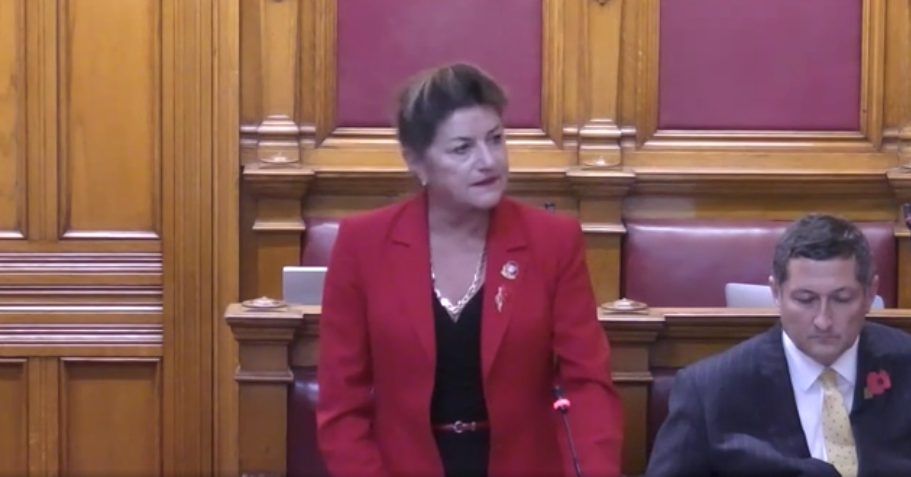

Mystery surrounds the origin of the forecast £30million black hole in the public purse, after government officials declined to provide any information about how they came up with the figure.
A need for large-scale changes to the public sector and staff cuts arising from a predicted “structural deficit” for 2020 to 2023 was first announced by the Chief Minister, Senator John Le Fondré, at a Chamber of Commerce lunch event in October last year.
But despite nearly nine months passing since then, and questions from Express and politicians, no further details have been provided over how exactly the significant funding gap arose.
According to information provided following a request under the Freedom of Information (FOI) Law, the figure came following a “strategic assessment”.
But when Express asked for a copy of this strategic assessment was requested under FOI Law, the request was refused after heavy delays.
They said this was because the government was in the process of developing an ‘Efficiency Programme’ – a roadmap as to how to achieve the savings needed to plug the black hole. Details of the plan will be included in the Government Plan, which is due to be lodged with the States Assembly by the end of this month.
Therefore, the response reasoned, the information should be exempt under two articles of the FOI Law: '35 – Policy under Development' and '36 – Information intended for future publication'.
While it acknowledged that providing the information would “promote accountability”, as well as helping the public understand “the methodology underlying the proposed financial savings”, the government added that it needed a “safe space” to develop its money-saving policy, and that this therefore outweighed the public interest in transparency.
Express has since appealed this refusal, as the request only aimed to establish the origin of the deficit figure – not gain details information about the Efficiency Programme arising from it.
But it isn’t only the media that has been declined this information.
In a written question to the Treasury Minister, Deputy Susie Pinel, Deputy Rob Ward asked: “What data was used to calculate this deficit?”
In a reply released this morning, Deputy Pinel simply stated that it was “based on forecasts using the latest information available at that time.”

Pictured: The Treasury Minister simply said the deficit figure was based on "forecasts".
The £30million to £40million gap in public finances has largely been used as the rationale for driving forward Chief Executive Charlie Parker’s ‘OneGov’ regime – a programme that has involved the largest ever shake-up to government services with the creation and renaming of several departments, with a focus on driving “efficiencies.”
At the time of the announcement, the Chief Minister explained that the upcoming deficit would therefore involve identifying “savings” and a “permanent reduction in the size of the States’ workforce”. The size of that reduction is still yet to be announced.
Since then, the deficit has also been quoted as the rationale for not providing cost-of-living pay rises to government workers, which led to industrial action by civil servants and teachers, which escalated into days of walk-out strikes.
When the island’s biggest civil service union, JCSA Prospect, urged the government to use £51million from savings and surpluses to put an end to the dispute, followed by proposals to do so by Deputy Geoff Southern, the Chief Minister firmly declined on the basis that the government was in a vulnerable position, predicting a funding shortfall of up to £40million.
The deficit has also been used as the justification for the employment of several highly-paid consultants and interim staff tasked with delivering these savings. Last week, Express revealed that their travel and accommodation expenses over 18 months totalled nearly £600,000.
Although full details of the ‘Efficiency Programme’ is yet to be made public, it is known that each department has been asked to trim its spending.

Pictured: The Chief Minister said the La Motte Street move for public-facing services would save money.
But in an interview with Express, the Chief Minister, Senator John Le Fondré, declined to describe this as “cuts”.
Instead, he said that departments were being asked to find “one-off savings” that would carry forward – delivering “the same or better services” at a lower cost.
Providing a “tangible” example, he said that the decision to move attestation forms online would save "around £30,000" yearly in manpower and time.
He added that the decision to integrate several public-facing services at La Motte Street into the now ‘Customer and Local Services Department’ would also achieve a significant spending reduction.
The Chief Minister further added that the government was currently looking using facilities that are only put to full use “around 40% of the time” in a more productive way, but declined to provide further information.
Despite the Education and Infrastructure Ministers, among others, having previously publicly spoken of budgetary pressures, Senator Le Fondré denied that there were any tensions within the Council of Ministers team regarding identifying areas where expenditure could be slashed.
Comments
Comments on this story express the views of the commentator only, not Bailiwick Publishing. We are unable to guarantee the accuracy of any of those comments.